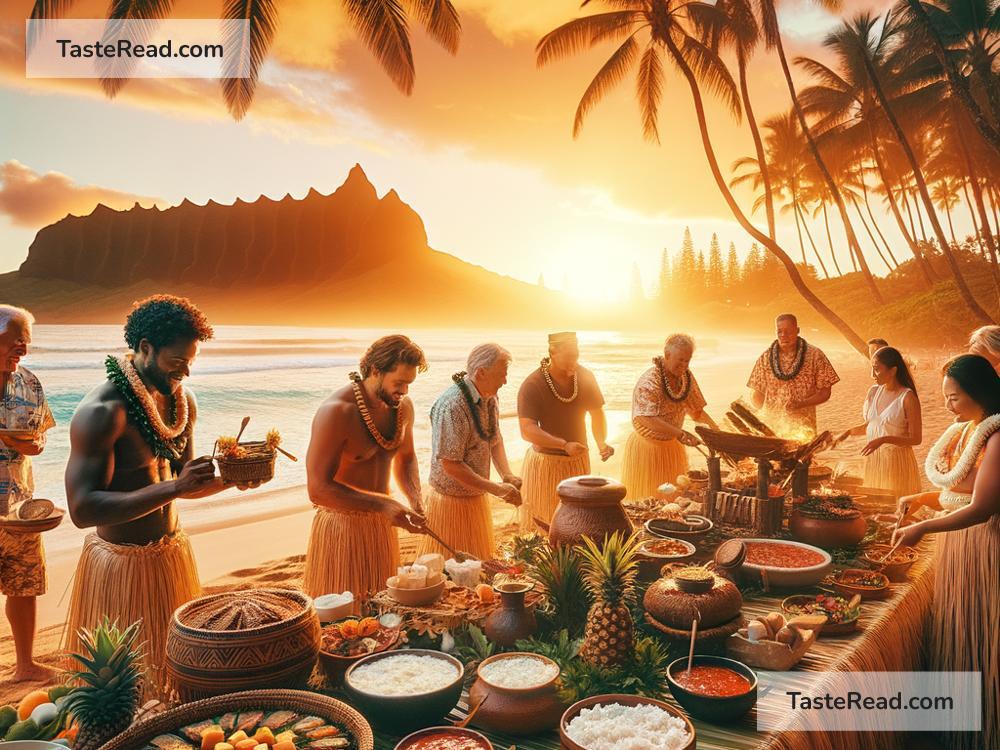Discovering Indigenous Foods in Hawaii: A Journey Through Taste and Tradition
Hawaii, an archipelago with a rich cultural tapestry, offers a unique canvas of flavors, traditions, and natural beauty. Among its many treasures, the indigenous foods of Hawaii stand out, offering a path to understanding the islands’ heritage, history, and relationship with nature. Embarking on a journey to discover these foods is not just about tasting something different; it’s about connecting with Hawaii’s soul.
The Backbone of Hawaiian Cuisine
At the heart of Hawaiian indigenous cuisine are foods like taro (kalo), breadfruit (ulu), and sweet potato (uala). These staple foods have nourished generations with their versatility and nutritional richness. However, the star among them is undoubtedly taro, primarily made into poi—a thick paste that is a common side dish in Hawaiian meals. Poi is a testament to the Hawaiian spirit of community and sharing, often found at gatherings and family meals, reminding everyone of the land’s generosity.
A Taste of the Sea
The Hawaiian Islands, surrounded by the vast Pacific Ocean, have a deeply rooted connection with the sea. This bond is reflected in their indigenous diet, prominently featuring fish and other seafood. Lomi-lomi salmon (a side dish made with salted salmon, tomatoes, onions, and sometimes chili pepper for a little kick) and poke (a seasoned raw fish salad) stand out as examples of Hawaii’s love for oceanic bounty. Through these dishes, one can taste the respect and understanding the natives have for the sea’s resources.
The Magic of Luau
Perhaps no event better encapsulates the essence of Hawaiian food and culture than a luau. This traditional Hawaiian party or feast is more than just a celebration; it’s a showcase of indigenous foods, cooking techniques, and communal spirit. A luau might feature kalua pig, cooked in an underground oven called an imu, revealing the Hawaiians’ ingenious ways to make the flavors of the land and sea come alive. Other luau staples include laulau (pork wrapped in taro leaves and steamed), and haupia (a coconut milk-based dessert), demonstrating the diversity and richness of native Hawaiian cuisine.
The Role of Foraging
Indigenous Hawaiian cuisine owes much to the practice of foraging, a method that involves gathering wild food from the land. This practice not only highlights the deep knowledge native Hawaiians have about their environment but also their respect for it. Foraged foods include various seaweeds, fern shoots, and wild fruits, which are often used to add unique flavors and textures to dishes. Through foraging, Hawaiians maintain a sustainable relationship with their surroundings, ensuring that they take only what they need while conserving the land and sea for future generations.
Embracing Hawaiian Food Today
Discovering Hawaiian indigenous foods is a journey of respect, understanding, and connection. These foods tell stories of survival, creativity, and harmony with nature. For visitors, trying these foods can be a profound way to connect with Hawaii’s culture and history. Local farmers’ markets, family-run restaurants, and cultural festivals are great places to start this culinary exploration.
As we embrace these indigenous foods, it’s also important to approach them with respect. This means recognizing their cultural significance and honoring the traditional ways of preparing and sharing them. By doing so, we not only enrich our taste buds but also contribute to the preservation of Hawaii’s cultural heritage.
Conclusion
Hawaii offers more than just spectacular landscapes and warm beaches; it invites you to embark on a culinary journey through its indigenous foods. This journey is not merely about discovering new flavors, but about understanding the deep connections the people of Hawaii have with their land, sea, and community. Through taro, poi, fresh seafood, and the experience of a traditional luau, we can begin to appreciate the rich tapestry of Hawaiian culture. So, the next time you visit these beautiful islands, remember to dive into the local cuisine and let the indigenous foods of Hawaii take you on a journey through taste and tradition.


